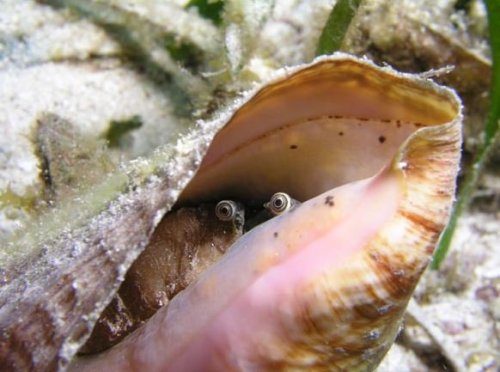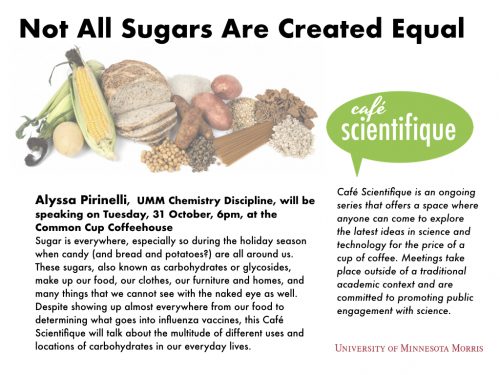You know what really annoys me about creationists? The unwarranted confidence in their beliefs; the smug and almost always incorrect dismissal of the evidence; and the ridiculous repetition. There isn’t an original thought in their heads, so every discussion turns into yet another refutation of the same stupid talking points we dealt with last week, last year, last decade. Here’s an example, a letter the the editor of the Argus Leader by Jeff Hambek. He’s complaining about a previous letter from a <gasp> atheist.
He stated that he does not believe in an afterlife. Since that cannot be scientifically proven, this is an element of faith. Is there a way to establish the truth regarding afterlife? For the free thinker, the well-documented life, death and resurrection of Jesus present plenty of evidence that there is a soul or being that remains after death of the body.
Hang on there, Mr Double Standard. You dismiss the idea that there is no afterlife, because it “cannot be scientifically proven”, yet you immediately turn around and claim that the Jesus myth is evidence of an afterlife. This is a lie. There is no scientific proof, to turn your claim against you, of the life, death, and resurrection of Jesus. There isn’t even any contemporary evidence. It’s a religious fable packed with miracles and magic written decades after the claimed events.
On the other hand, we do have good scientific evidence that the mind is a product of activity in the brain. Damage to the brain causes, for instance, personality changes. We don’t have any evidence of human minds functioning without a brain. It’s reasonable to infer that the self does not survive brain death, and that there is no mental activity when the brain rots down into a putrescent puddle.
Mr Hambek is just getting started, though, and launches into a criticism of the science of the origins of life, and quickly demonstrates that he has no idea what he’s talking about.
The atheist must also believe that life in the universe began as a happy accident. Science cannot prove this either.
Chance and necessity, guy. Early chemistry was a stochastic process that depended on random events that produced a predictable outcome. Chemistry is not a series of “happy accidents”.
Consider that the chemistry of the early earth was not favorable to formation of amino acids (per NASA).
Huh. That’s weird. We find amino acids in meteorites, for instance. The early Earth was not favorable for formation of stable compounds when it was molten, but once it cooled enough for water to condense, amino acids would have formed. That part isn’t hard.
Even if there were amino acids,
There were amino acids, no “if” about it.
it is against the statistical odds that these would spontaneously form life-sustaining proteins, since only some amino acids will work and other chemicals combine more readily with amino acids than other amino acids.
Isn’t organic chemistry fun?
This odds-based argument is bunk, though. It’s not about chance at all. It’s about likely chemical pathways that would have been present in the pre-biotic earth.
Even if there were the right proteins, they would have to combine with other chemicals in just the right way to form a cell wall. The cell wall would have to be in the right place at the right time and enclose itself around the instruction manual (DNA) and power plant (mitochondria) necessary for the cell to live.
Early cells would not have had DNA or mitochondria. Mitochondria evolved a bit over 2 billion years ago, about 2 billion years after life arose. It’s also unlikely that the first cells would have had a cell wall — a cell membrane would have been assembled some time after the first autocatalytic processes evolved, but even that wouldn’t have come first.
I’m going to guess that Mr Hambek hasn’t read one book or paper about origin of life models.
No one has a reasonable explanation of how those things came into being by themselves.
Incorrect. See below.
Even if that very first cell were formed, it is an incredible leap from there to a multi-celled organism, which requires finely-tuned and interlocking systems to intake and distribute sustenance and dispose of waste.
Multicellular organisms aren’t as big a leap as Mr Hambek thinks. We all still use the same metabolic and replicative processes that evolved in prokaryotes, and even the cell signaling mechanisms that we’ve elaborated upon to produce greater complexity are present in single-celled organisms.
Atheistic religion was easier back in Darwin’s day. With what we now know about the chemistry and machinery inside a cell, I cannot muster the level of faith required for this religion.
Oh god, here we go again — a religious believer using a claim that atheism is a religion as a pejorative, and using the same old slogans I’ve heard for forty years. Please learn a new routine.
I’m going to have to recommend some remedial reading for Mr Hambek. Here’s a paper on Early bioenergetic evolution by, among many others, Martin and Lane. It kinda contradicts a lot of his half-assed claims about the science.
Life is the harnessing of chemical energy in such a way that the energy-harnessing device makes a copy of itself. This paper outlines an energetically feasible path from a particular inorganic setting for the origin of life to the first free-living cells. The sources of energy available to early organic synthesis, early evolving systems and early cells stand in the foreground, as do the possible mechanisms of their conversion into harnessable chemical energy for synthetic reactions. With regard to the possible temporal sequence of events, we focus on: (i) alkaline hydrothermal vents as the far-from-equilibrium setting, (ii) the Wood–Ljungdahl (acetyl-CoA) pathway as the route that could have underpinned carbon assimilation for these processes, (iii) biochemical divergence, within the naturally formed inorganic compartments at a hydrothermal mound, of geochemically confined replicating entities with a complexity below that of free-living prokaryotes, and (iv) acetogenesis and methanogenesis as the ancestral forms of carbon and energy metabolism in the first free-living ancestors of the eubacteria and archaebacteria, respectively. In terms of the main evolutionary transitions in early bioenergetic evolution, we focus on: (i) thioester-dependent substrate-level phosphorylations, (ii) harnessing of naturally existing proton gradients at the vent–ocean interface via the ATP synthase, (iii) harnessing of Na+ gradients generated by H+/Na+ antiporters, (iv) flavin-based bifurcation-dependent gradient generation, and finally (v) quinone-based (and Q-cycle-dependent) proton gradient generation. Of those five transitions, the first four are posited to have taken place at the vent. Ultimately, all of these bioenergetic processes depend, even today, upon CO2 reduction with low-potential ferredoxin (Fd), generated either chemosynthetically or photosynthetically, suggesting a reaction of the type ‘reduced iron → reduced carbon’ at the beginning of bioenergetic evolution.
Chemistry ain’t a religion, OK?
That paper might be too technical for someone who gets his ‘facts’ out of a Bible, so here’s a less complicated discussion of some possible 4 billion year old fossils.
Discovered in slices of rock recovered from northern Quebec, the microscopic metallic detritus—plus chemical signatures associated with ancient metabolisms—could push back the date at which life arose on Earth. If verified, these fossils would surpass 3.7-billion-year-old microbial mats found in Greenland as the oldest known traces of life.
The microfossils also lend support to the idea that the warm, watery, mineral-rich neighborhoods around submerged vents are prime places for life to emerge, whether on this planet, on the seafloors of icy moons, or elsewhere in the universe.
Scientists seem to think the emergence of life is probable, not just a “happy accident”. But who are you going to believe, a bunch of people who’ve studied chemistry and biology for years, or some random Christian doofus from South Dakota who doesn’t even realize that not all cells have mitochondria?







